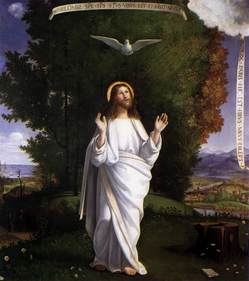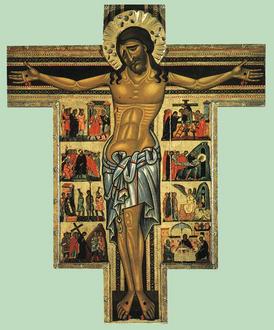In the famous Sermon on the Mount Jesus speaks of the three important spiritual exercises: fasting, prayer and almsgiving. Here I want to write about fasting. And over the many centuries that the Catholic Church has existed, there has been development in the teaching based on experience.
Jesus’ teaching on fasting is this:
*Fasting is an extremely important means –not an ends– of resisting sin and the threat of hell.
*Fasting is practiced as a memorial of Christ’s death on Good Friday; it ought to be practiced each Friday but the Church only requires fasting on Ash Wednesday and Good Friday.
*Fasting is intimately linked to prayer and almsgiving as spiritual exercises.
In paragraph of 2043 of the Catechism of the Catholic Church, quoting the Code of Canon Law, states, “The fourth precept (“You shall observe the days of fasting and abstinence established by the Church”) ensures the times of ascesis and penance which prepare us for the liturgical feasts and help us acquire mastery over our instincts and freedom of heart.”
Our Church still believes that fasting is not only helpful, but is required because it forms and reforms a sense of faith, hope and charity. Serious Christians will not abandon the practice of fasting, especially before significant events in life like baptism, confirmation, marriage, ordination, etc. So what does the Church believe about fasting? Fasting means…
*There are two fast-days on which we are allowed but one full meal but person can have one full meal, take two other meatless meals, to maintain strength, according to one’s needs. Taken together these two meatless meals should not equal another full meal.
*All people over 18 and under 59 years of age, and whose health and occupation will permit them to fast. (Abstinence begins for those who are 14.) The Church, showing mercy, does excuse certain persons from the obligation of fasting on account of age, health, work, or the circumstances in which they live. Children, from the age of seven years, and persons who are unable to fast are bound to abstain on days of abstinence, unless they are excused for sufficient reason. If questions persist, please find a parish priest for consultation.
*Fast-days occur during Advent and Lent, on the Ember days and on the vigils or eves of some great feasts. A vigil falling on a Sunday is not observed.
Fasting is often seen by some people as antiquated, harmful, or a waste of time. To think that fasting is only about the legal requirements of the faith, is a serious reduction of the practice of religion to ideology. Moralism is shallow and gets us no where. I will say, fasting is an essential part of being formed in the Catholic faith, adhering closely to Christ. No one who takes seriously their faith can dispense themselves without good reason from fasting as Christ fasted. Yes, it is hard and yes it is annoying but the pay-off is profound because it opens the body, the heart and the mind to grace. Fasting allows us to see more deeply and clearly the conversion we are called to work on, and to be less satisfied with the status quo. Fasting assists our restlessness in tending towards God by stripping away sin (and a little weight comes off, all the better).
I have to say there is a beauty in fasting because it is a method in emptying myself of that which weighs me down either with food –which makes me sluggish and at time incapable of listening to the movements of the Holy Spirit in my life– or fasting from sinful tendencies which can also make me sluggish but there is a significant risk in not fasting from sin because sin leads away from God and from the heart of the Church, the sacrament of Christ on earth.





